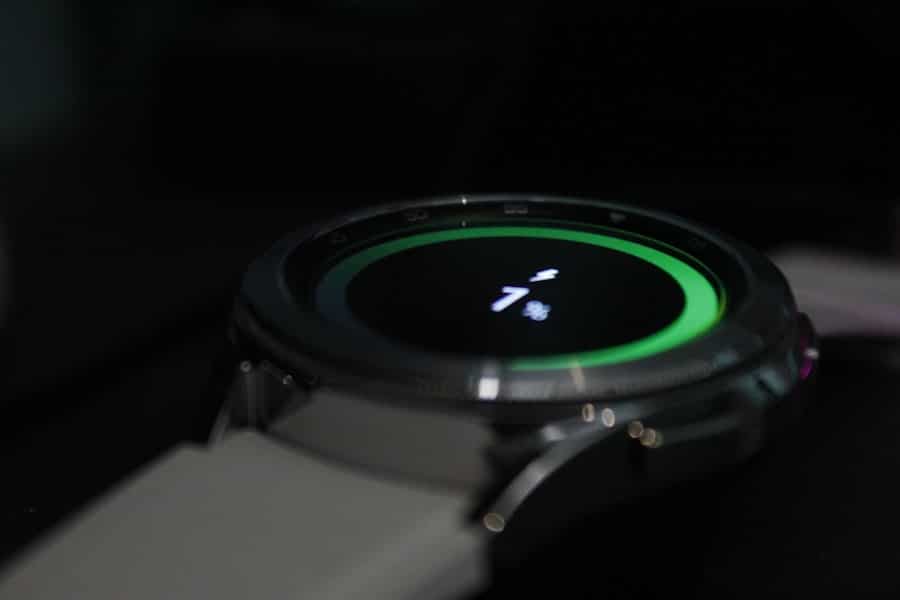The advent of wearable technology has revolutionized various sectors, and emergency response is no exception. Wearables, which include devices such as smartwatches, fitness trackers, and specialized medical monitors, have become integral tools for first responders and emergency personnel. These devices are designed to enhance situational awareness, improve communication, and facilitate real-time data collection, ultimately leading to more effective emergency management.
As the landscape of emergencies evolves, so too does the need for innovative solutions that can provide timely information and support to those on the front lines.
This shift is driven by advancements in technology, including improved sensor capabilities, enhanced connectivity options, and the proliferation of mobile applications.
The ability to monitor vital signs, track locations, and communicate seamlessly during emergencies has made wearables indispensable for first responders. As we delve deeper into the various applications of wearables in emergency situations, it becomes evident that these devices not only enhance operational efficiency but also contribute significantly to saving lives.
Key Takeaways
- Wearables play a crucial role in emergency response by providing real-time data and communication capabilities.
- Monitoring vital signs through wearables can help emergency responders assess and prioritize medical care for individuals in distress.
- Location tracking and communication features in wearables enable efficient coordination and deployment of resources during emergencies.
- Integrating wearables in disaster preparedness plans can enhance situational awareness and response effectiveness.
- Wearables offer personal safety and protection features such as panic buttons and emergency alerts for individuals in emergency situations.
The Role of Wearables in Monitoring Vital Signs
One of the most critical functions of wearables in emergency response is their ability to monitor vital signs in real-time. Devices equipped with sensors can track heart rate, blood pressure, oxygen saturation, and other essential health metrics. This capability is particularly valuable in high-stress situations where rapid assessment of a patient’s condition is crucial.
For instance, paramedics can use wearable devices to continuously monitor a patient’s vital signs while en route to a hospital, allowing them to make informed decisions about treatment and intervention. Moreover, the data collected by these wearables can be transmitted directly to medical facilities, enabling healthcare providers to prepare for incoming patients. This pre-hospital communication can significantly reduce response times and improve patient outcomes.
For example, if a paramedic detects an abnormal heart rate or low oxygen levels through a wearable device, they can alert the receiving hospital to have the necessary resources ready upon arrival. This proactive approach not only streamlines the care process but also enhances the overall efficiency of emergency medical services.
Wearables for Location Tracking and Communication
In addition to monitoring vital signs, wearables play a pivotal role in location tracking and communication during emergencies. GPS-enabled devices allow first responders to pinpoint their exact location and navigate through challenging environments. This capability is particularly beneficial in disaster scenarios where traditional navigation methods may be compromised.
For instance, during a natural disaster such as a hurricane or earthquake, responders can use wearables to coordinate their efforts and ensure that they reach those in need as quickly as possible. Communication is another critical aspect of emergency response that wearables enhance. Many modern wearable devices come equipped with features that facilitate instant communication between team members.
This can include push-to-talk functionality or integration with existing communication systems used by emergency services. In chaotic situations where verbal communication may be difficult due to noise or stress, these features allow responders to relay important information quickly and efficiently. For example, a firefighter wearing a smart helmet with integrated communication capabilities can share real-time updates about fire conditions or structural integrity with their team without needing to remove their helmet or disrupt their focus.
Integration of Wearables in Disaster Preparedness
The integration of wearables into disaster preparedness plans is becoming increasingly common as organizations recognize their potential to enhance readiness and response capabilities. Wearable technology can be utilized for training exercises that simulate emergency scenarios, allowing responders to familiarize themselves with the devices and their functionalities before an actual event occurs. This hands-on experience can significantly improve the effectiveness of response teams when faced with real-life emergencies.
Furthermore, wearables can assist in gathering data during disaster preparedness drills. By monitoring vital signs and stress levels during training exercises, organizations can identify areas for improvement in their response strategies. For instance, if data shows that responders experience elevated heart rates during specific scenarios, this information can inform adjustments to training protocols or resource allocation.
Additionally, wearables can be used to track the physical fitness levels of responders over time, ensuring that they are adequately prepared for the demands of emergency situations.
Wearables for Personal Safety and Protection
Beyond their applications in professional emergency response settings, wearables also serve as valuable tools for personal safety and protection in everyday life. Devices designed for individual use can provide users with features such as fall detection, emergency alerts, and location sharing with trusted contacts. These functionalities are particularly beneficial for vulnerable populations, including the elderly or individuals with medical conditions that may require immediate assistance.
For example, a smartwatch equipped with fall detection technology can automatically alert emergency services if it detects a sudden fall followed by inactivity. This feature ensures that help is dispatched promptly, even if the individual is unable to call for assistance themselves. Additionally, many wearables allow users to send distress signals or share their location with family members or friends at the touch of a button.
This capability enhances personal safety by providing individuals with a means to communicate their situation quickly and discreetly.
Challenges and Limitations of Wearables in Emergency Response
Despite the numerous advantages that wearables offer in emergency response scenarios, several challenges and limitations must be addressed to maximize their effectiveness. One significant concern is the reliability of data transmission during emergencies. In high-stress situations or areas with limited connectivity, wearables may struggle to transmit vital information in real-time.
This limitation can hinder decision-making processes and delay critical interventions. Another challenge lies in the interoperability of different wearable devices and systems used by various emergency response organizations. Standardization is essential for ensuring that data from different devices can be easily shared and understood across platforms.
Without a unified approach, responders may face difficulties in accessing crucial information from multiple sources during an emergency. Additionally, privacy concerns surrounding the collection and sharing of personal health data must be carefully managed to maintain public trust in wearable technology.
Future Developments and Innovations in Wearables for Emergency Response
The future of wearables in emergency response is poised for significant advancements as technology continues to evolve. One promising area of development is the integration of artificial intelligence (AI) into wearable devices. AI algorithms can analyze real-time data collected from wearables to provide actionable insights for responders.
For instance, AI could predict potential health complications based on trends observed in vital sign data, allowing responders to take preventive measures before issues escalate. Moreover, advancements in battery technology and energy efficiency will enhance the usability of wearables in prolonged emergency situations.
Additionally, innovations in materials science may lead to more durable and lightweight wearables that can withstand harsh environmental conditions encountered during emergencies.
The Impact of Wearables on Improving Emergency Response
The integration of wearable technology into emergency response has transformed how first responders operate and interact with their environment. By providing real-time monitoring of vital signs, facilitating location tracking and communication, and enhancing disaster preparedness efforts, wearables have become indispensable tools in modern emergency management. While challenges remain regarding data reliability and interoperability, ongoing innovations promise to address these issues and further enhance the capabilities of wearables.
As we look ahead, it is clear that wearables will continue to play a pivotal role in shaping the future of emergency response. The potential for AI integration, improved battery life, and advancements in materials will only serve to strengthen their impact on saving lives and improving outcomes during emergencies. The ongoing evolution of wearable technology signifies a commitment to enhancing public safety and ensuring that first responders are equipped with the best tools available to meet the challenges they face in an increasingly complex world.
In a recent article on ENICOMP, they discuss the importance of finding the best laptop for copywriters to enhance their writing experience. This article provides valuable insights into the features and specifications that copywriters should consider when selecting a laptop. For those interested in technology and innovation, this article serves as a great resource for understanding the tools that can improve writing efficiency. To read more about this topic, check out The Best Laptop for Copywriters: Finding Your Perfect Writing Companion.
FAQs
What are wearables?
Wearables are electronic devices that can be worn on the body as accessories or implants. They are designed to perform a specific function and are often connected to the internet for data exchange.
How are wearables being integrated into emergency response protocols?
Wearables are being integrated into emergency response protocols to provide real-time health and location data for individuals in distress. This information can help emergency responders to quickly locate and assist those in need.
What types of wearables are being used in emergency response protocols?
Various types of wearables are being used in emergency response protocols, including smartwatches, fitness trackers, medical alert devices, and even smart clothing with embedded sensors.
What are the benefits of integrating wearables into emergency response protocols?
Integrating wearables into emergency response protocols can provide faster and more accurate assistance to individuals in distress. It can also help emergency responders to prioritize their resources and provide targeted medical care.
Are there any challenges in integrating wearables into emergency response protocols?
Challenges in integrating wearables into emergency response protocols include ensuring the reliability and accuracy of the data collected, addressing privacy concerns, and establishing protocols for accessing and using wearable data in emergency situations.



